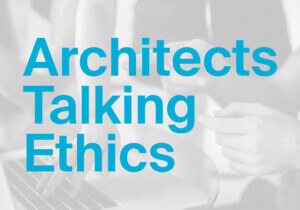For the duration of the coronavirus (COVID-19) crisis, AN will use this column to keep our readers up to date on how the pandemic is affecting architecture and related industries. This weekly article is meant to digest the latest major developments in the crisis and synthesize broader patterns and what they could mean for architecture in the United States. The previous edition of the column can be found here.
In the last column, I covered what firm owners need to know about the federal coronavirus-related relief programs, and this week I’m looking at what (former) employees should know.
If you’re being laid off for the first time, it can be a scary and confusing experience, but it’s not the end of the world (I’m speaking from personal experience), and, given the way the Architecture Billings Index has been heading, you are probably not alone in losing your job. That being said, some basic information helps a lot, and there are also some added twists of getting laid off during the pandemic that make this moment different.
I’m not an accountant, and this column isn’t a substitute for professional financial advice, but there are a few basic pointers that can help anyone. Traditional employment assistance is available to employees who have been laid off or furloughed and comes in the form of taxable weekly payments to you as long as you’re unemployed for up to six months. It’s administered by states, so every state has a different filing website, has different requirements, and offers different benefits, but you can expect to receive a certain portion of your previous income. It’s a really helpful way to get money without a lot of strings attached to help keep you afloat. In normal times, the process is pretty straightforward, and you can keep getting money as long as you affirm that you’re looking for a job and attend a few meetings. But these aren’t normal times—generally, states are overwhelmed by the number of claims thanks to unprecedented job losses, so there are a lot of delays at every step of the process. Do not give up if you are unable to apply online or over the phone on your first try. Application websites are crashing, state helplines are backed up, and benefits are taking weeks to go out, so patience is critical.
If you do apply and get rejected, file an appeal while you figure out why you were rejected—because of the backlog, it may take weeks to find out why you were rejected and get your application amended, and an appeal may help you get back payments if you get approved later on. Because the system is so slow, take extra care to make sure that you’ve filled out the application as fully as possible. Rochester, New York’s Democrat and Chronicle interviewed New York State Department of Labor Commissioner Roberta Reardon, who said that incorrectly entered federal employer identification numbers were slowing down many applications and suggested that applicants be sure to get those numbers from their former employers when they get laid off.
There are also new benefits temporarily available: Pandemic unemployment assistance (PUA), which the Coronavirus Aid, Relief, and Economic Security (CARES) Act created, offers an additional $600 per week on top of traditional unemployment benefits. Freelancers are also eligible for PUA, even though they are excluded from most unemployment benefits. Depending on your state, you may have to apply for these benefits separately from traditional benefits—and the process may not go smoothly. Philadelphia magazine reported that Pennsylvania’s system hasn’t made it easy for many there to get their money, and the Hartford Courant reported similar problems in Connecticut. Though exact eligibility terms vary across states, according to Benjamin Sargent, an accountant who works with creative professionals, “you can be eligible for partial unemployment benefits,” thanks to PUA, so employees who’ve had their hours cut or pay reduced may be able to apply. If you have been able to get unemployment benefits, keep in mind that you may lose traditional benefits if you choose not to go back to a job that you’ve been furloughed from, but you may still be eligible for PUA if you are taking care of someone sick from COVID-19 or if you are taking care of children home because of closed schools.
Aside from applying for unemployment benefits, what can you do? Brandon Hubbard, author of The Architect’s Guide, had some emotional advice: “Don’t beat yourself up, what’s happening to the economy is not your fault, and the anxiety and devastation you’re experiencing is understandable. Staying calm and making rational decisions during a time of uncertainty is essential.” Ruben Cano, managing partner at 52X Consulting, a recruiting company specializing in architecture and related fields, advised job-seekers to not be too picky, saying that in the long run, it’s often better to accept an underwhelming offer than stay unemployed. “Value continuity over income,” Cano said. “After 2008, far too often we’d see people lose opportunities by over-negotiating without leverage…When the market rebounds, you will be ahead of those re-entering the workforce who spent time on the bench.” As the job market tightens, flexibility will help, too. “Do not become too narrowly focused or philosophically rigid,” Cano said.
If you’re lucky enough to still have a job, Hubbard had some advice about how to keep it: “Try to position yourself as essential rather than peripheral to your projects, so that it would be difficult to let you go and still meet deadlines.” But, he advised, there’s more to being valued than just being important. “Be collegial to managers, peers, consultants, and support staff. Being nice won’t necessarily save you, but being unpleasant will almost certainly hurt,” Hubbard said. Sargent, who has published a financial FAQ on his company’s site, has advised belt-tightening just to be safe. “If you’re still working, cut your expenses and save as much as you can to prepare in case you do lose your job…If you’ve been saving for a rainy day, today is that day. Now more than ever a household budget is a critical planning tool to know how long that savings will last.”
If you do have a job, be prepared to lose it. Layoffs can be stressful, and being mentally prepared to navigate the transition to unemployment can make it a little easier. Shota Vashakmadze, who has been running The Architecture Lobby’s COVID Response Team, said that many of the architects and designers he had talked to felt unprepared to discuss the terms of a layoff and what their options might be. “Architects don’t feel comfortable in this area, but many people we talked to are realizing the need to be informed and organized,” he said. The Lobby, which is advocating for unionization and cooperativization in response to the pandemic, is running an anonymous survey to gauge the crisis’s impact on the industry, and the results may help give architects and designers a sense of what others are going through. Jordan Weissman at Slate wrote about another option for organized workers that the Los Angeles Times employees have adopted: work sharing. The strategy involves workers forming an agreement to collectively bear the burdens of labor cuts, and allows them to collectively file for unemployment benefits. As Weissman reported, work sharing is not well known in this country, and may be a difficult option to pursue because of that, but it is a possibility.
In other news, some of the effects of the pandemic are potentially passing: Pop-up coronavirus hospitals are winding down, construction sites are reopening, and Italian manufacturers are restarting. Also, this year’s Serpentine Pavilion will open next year, and students at the Yale School of Architecture have organized to work with the school’s administration for a better response to the pandemic.
Until next time, be well!











